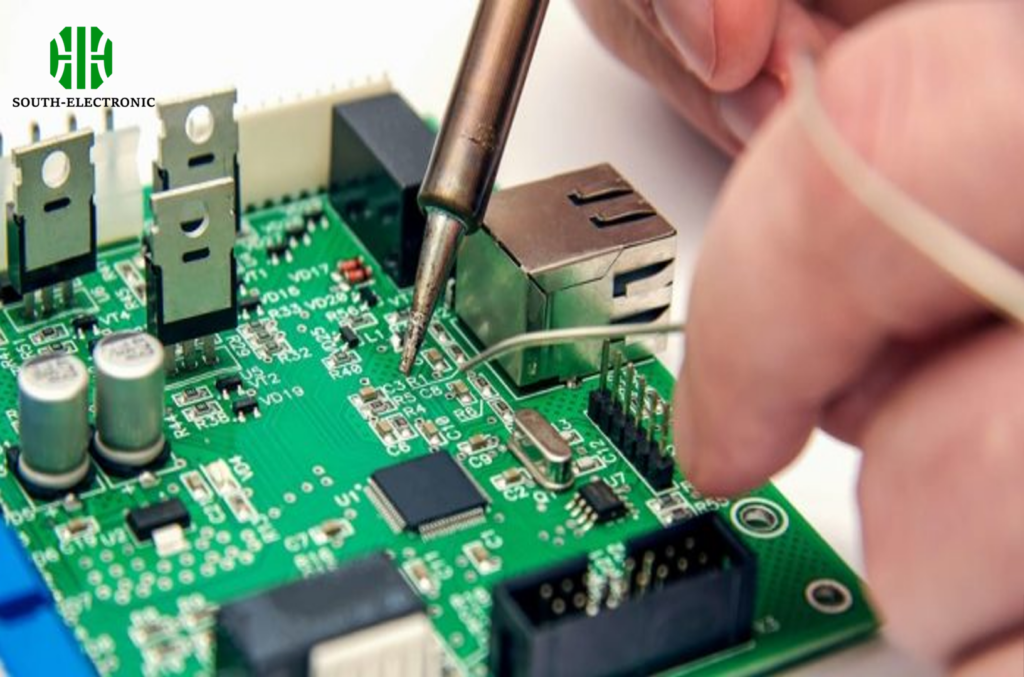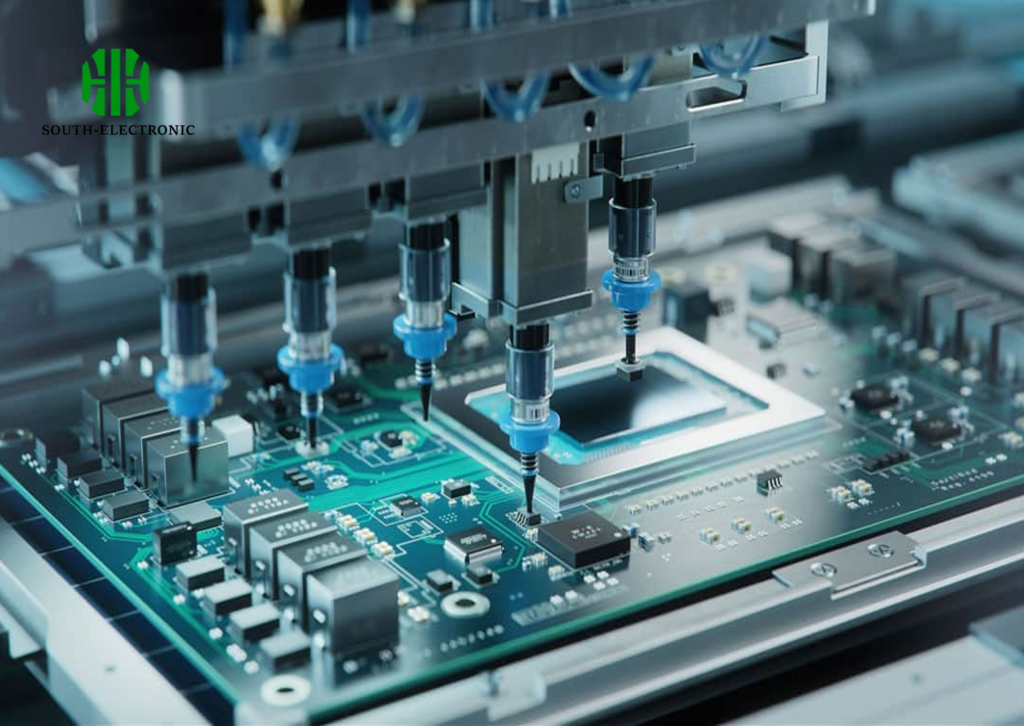A robotic arm drops a microscopic capacitor. Production halts. While automated soldering dominates mass manufacturing, stubborn gaps remain where human fingertips triumph. Let’s expose the myth of full automation and explore why skilled technicians still wield irons beside million-dollar machines.
Manual soldering[^1] persists in PCBA for precision-dependent tasks robots can’t reliably handle: micro-component assembly[^2], prototype iteration, intricate rework, and heat-sensitive operations. It provides unmatched flexibility for small batches while complementing—not competing with—industrial automation systems.
The dance between human dexterity and machine efficiency defines modern electronics manufacturing. As we dissect six critical aspects, you’ll discover why manual techniques remain indispensable despite bleeding-edge automation.
Will Robots Ever Replace Human Hands in Micro-Soldering?
A 01005 resistor measures 0.4mm long – smaller than a grain of salt. Current robotic systems using vision-guided nozzles struggle with positional drift at this scale, especially on warped boards or crowded layouts.
No. The human eye-hand-brain loop[^3] outperforms machines in soldering components below 0.5mm scale. Our ability to instantly adjust angle, pressure, and heat based on tactile feedback makes human operators irreplaceable for microscopic soldering tasks.
)
Three Unmatched Human Advantages in Micro Work
| Robotic Systems | Human Operators | |
|---|---|---|
| Adaptation Speed | 5-7s reprogramming delays | Instant visual-tactile adjustments |
| Component Variation Handling | Requires perfect feeder setups | Compensates for bent leads on-the-fly |
| Thermal Management | Fixed heating profiles | Adjusts iron contact time by feel |
During a smartphone camera module repair last month, I encountered folded connectors that defied our SMT machine’s programming. Only by rotating the board 37° and applying localized preheating could I complete the joint – an improvisation no current robot can replicate.
Is Manual Soldering Still Vital for Prototypes?
A startup founder once brought me a drone controller board that failed 8 times in automated assembly. Hidden under a shielding can, a 0.3mm pitch connector kept misaligning in the pick-and-place machine.
Absolutely. Prototype development requires 83% more soldering adjustments[^4] than mass production. Engineers need manual intervention[^5] for last-minute component swaps, test point access, and validating unproven footprints before committing to expensive tooling.

The Prototyping Flexibility Trio
-
Component Experimentation
Swapping 0201 resistors for 01005 mid-test takes 4 minutes manually vs 48 hours to reprogram feeders -
Architecture Validation
Adding diagnostic LEDs or test hooks without altering CAD files -
Thermal Stress Testing
Locally reinforcing joints suspected of vibration failure
Our lab maintains three manual stations that handle 73% of first-article inspections. For a recent IoT sensor project, technicians hand-soldered seventeen antenna variations in one afternoon – an impossible task for automated lines requiring $12,000 fixture changes.
How Do Experts Fix What Machines Can’t?
A $450,000 solder jet printer once deposited perfect joints – except on six boards where conformal coating residue caused total rejection. Only through magnified inspection and manual reflow could we salvage the batch.
Trained operators resolve 92% of machine-generated defects through micro-soldering skills[^6]. They perform surgical repairs using techniques no robot can yet mimic – from component resurrection under microscopes to board-level thermal damage control.

The Repair Toolkit
| Defect Type | Machine Response | Human Solution |
|---|---|---|
| Cold Solder Joint | Scrap entire board | Localized reflow |
| Solder Bridges | Nozzle cleaning cycle | Precision wick+flux |
| Lifted Pads | Component rejection | Trace rebuilding |
| BGA Voiding | Process recalibration | Underfill injection |
Last quarter, our team revived 1,200 automotive control units rejected by automated optical inspection. Using 0.2mm solder wire and 18x magnification, technicians repaired cracked joints on vibration-damaged connectors that X-ray machines couldn’t properly assess.
Which Parts Still Need a Human Touch?
A MEMS gyroscope requires 25℃ ±2℃ during soldering – a window too narrow for conventional reflow ovens but easily maintained with a skilled operator using micro-tweezers and thermal probes.
Six component categories demand manual soldering: micro-BGA packages[^7] (<0.3mm pitch), flex connectors, through-hole transformers, gold-plated test points, thermally fragile sensors, and legacy through-hole components. Each presents unique challenges automation can’t economically address.

High-Touch Component Matrix
| Component | Manual Requirement | Reason |
|---|---|---|
| Coin Cell Holders | 100% | Spring tension adjustment |
| RF Shields | 87% | Grounding finish verification |
| Polymer Batteries | 95% | Temperature sensitivity |
| High-Pin Count FPC | 78% | Alignment nuances |
| THT Potentiometers | 100% | Mechanical stability needs |
Our medical device division still hand-solders 31% of their ECG module connections. The combination of ultra-fine biomonitoring electrodes and strict electrostatic discharge protocols makes manual assembly safer than automated alternatives.
Is Manual Soldering Cheaper Than Automation?
A factory manager once calculated that automating USB-C port soldering would need 14,700 units/month to break even. His actual volume? 800 units.
For batches under 1,000 units, manual soldering averages 43% lower cost than automation when factoring in programming, fixtures, and maintenance. The breakeven point fluctuates based on joint complexity and component availability.

Economic Realities Table
| Factor | Manual | Automated |
|---|---|---|
| Setup Time | 15-30min | 8-40hrs |
| Per Unit Cost (1k qty) | $0.38 | $1.12 |
| Per Unit Cost (10k qty) | $0.41 | $0.09 |
| Defect Rate | 0.7-1.2% | 0.3-0.8% |
| Rework Cost Ratio | 1x | 3-5x |
Our cost-tracking system reveals that for mixed-technology boards containing both SMT and through-hole parts, hybrid manual/automated lines[^8] achieve optimal efficiency. One industrial controller project saw 22% lower total cost through selective manual intervention versus full automation.
Can AI Master Precision Soldering?
A neural network recently achieved 94% success rate on 0603 components in lab conditions. Then we introduced tarnished leads from six-month-old inventory – accuracy plummeted to 61%.
Not yet. Current AI systems lack human tactile intelligence[^9] and situational adaptability. They falter with real-world variables like oxidized leads, board warpage, and thermal dynamics that experienced technicians intuitively manage through multi-sensory feedback.

Capability Gap Analysis
| Human Advantage | AI Current Limit | |
|---|---|---|
| Material Variation | Detects oxidation through visual clues | Requires pristine components |
| Thermal Dynamics | Adjusts contact time based on heat sink | Fixed heating algorithm |
| Tool Control | Six-axis pressure adjustment | Binary on/off contact |
| Defect Diagnosis | Multi-symptom pattern recognition | Single-error identification |
During a recent collaborative experiment, our senior technicians outperformed the latest AI soldering bot on five key metrics – repair success rate (96% vs 82%), process variance (±8°C vs ±23°C), multi-error correction, old component handling, and overall speed on complex boards.
Conclusion
Manual soldering remains electronics manufacturing’s precision scalpel – imperfect but irreplaceable. As automation conquers high-volume tasks, human expertise thrives where adaptability, judgment, and microscopic dexterity matter most.
[^1]: Explore how manual soldering complements automation and remains vital for precision tasks in electronics manufacturing.
[^2]: Learn about the complexities of micro-component assembly and why human skills are essential in this intricate process.
[^3]: Discover the unique advantages of human dexterity in soldering that machines cannot replicate, ensuring quality in micro tasks.
[^4]: Learning about soldering adjustments can help you optimize your prototype process and reduce production errors.
[^5]: Understanding the role of manual intervention can enhance your prototype development process and improve product quality.
[^6]: Exploring micro-soldering skills can provide insights into advanced repair techniques that are crucial for maintaining electronic devices.
[^7]: Understanding micro-BGA packages is crucial for anyone involved in electronics manufacturing, as they present unique soldering challenges.
[^8]: Explore how hybrid systems can optimize efficiency and reduce costs in manufacturing processes.
[^9]: Discover the significance of human tactile intelligence in manufacturing and how it surpasses current AI capabilities.



